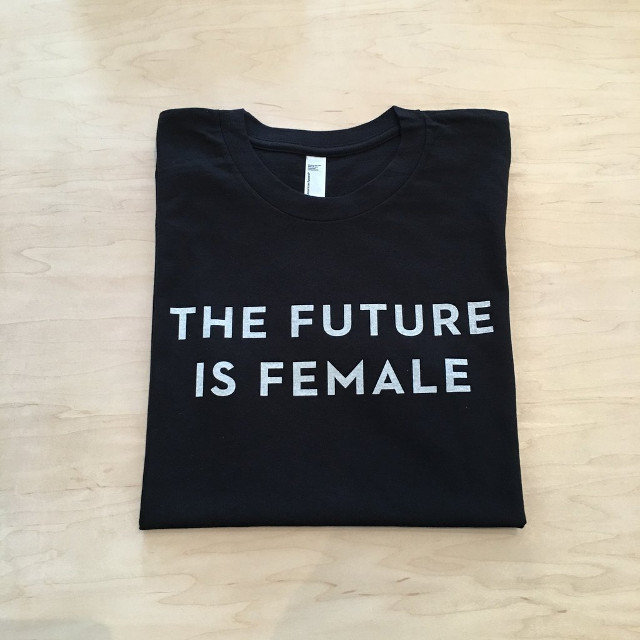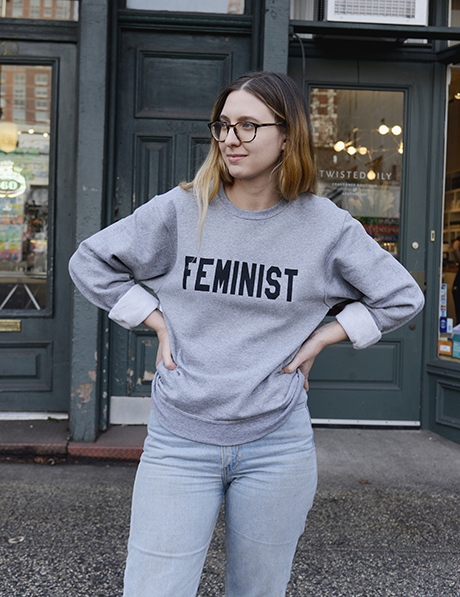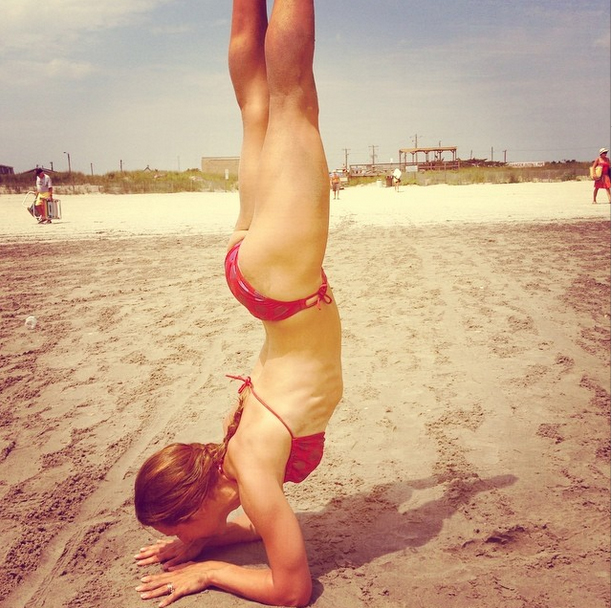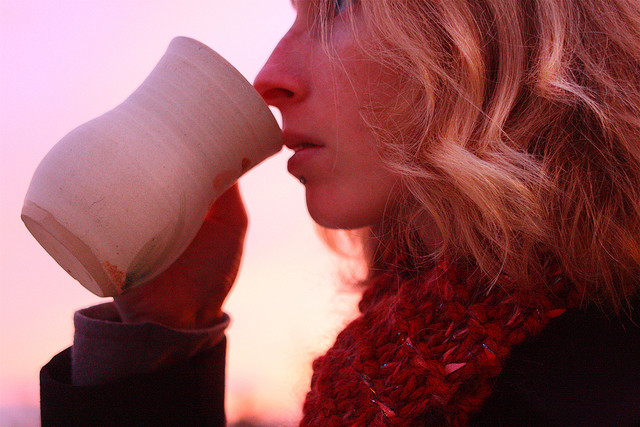A version of this article previously appeared on Walking with Cake.

The Future is Female shirt, via Otherwild.
A recent conversation about a shirt, printed with these words: “The Future is Female,” made me think about the way I dress and how it’s perceived.
I don’t consider this shirt truly political; at least, I didn’t before that discussion. As it turns out, the shirt has very political origins, which you can read more about in this New York Times article. Originally designed in the 1970s for Labyris Books, the first women’s bookstore in New York City, the shirt became well-known after Alix Dobkin wore it in a photograph taken by her girlfriend, Liza Cowan. The current version was recreated by Rachel Berks, owner of Otherwild, and a portion of the proceeds are donated to Planned Parenthood.
So yeah, it’s political. But why, I wondered, did I not see that?
That question has bugged me over the last few weeks, and I’ve been thinking a lot about the political aspect of fashion. Hoda Katebi, one of my favorite fashion-slash-political activist bloggers wrote a wonderful post, On the Political Value of Fashion, and I’ve read it several times. She was also recently profiled in a Mother Jones article that should be required reading. Hoda asserts that “You cannot choose to be apolitical about your fashion choices,” and I agree.
And this Vogue article explores the ways in which Black female activists used fashion as an extension of their work. Fashion is important because what you choose to wear sends a statement to the outside world, and we need to be clear about what statement we are sending.

Feminist Sweatshirt available at Meg Shop.
As a supporter of ethical fashion, I’m used to thinking differently about the clothing I purchase and wear. That, I’m realizing, is a political statement. Everything that I choose to cover my body, from my underwear to my shoes, is carefully researched before it’s purchased. It sounds boring and tedious, but it’s become a routine habit. Once I thought nothing of killing an hour by shopping at a local retail store and often bought things impulsively, but eventually, my eyes were opened. As I began to understand the implications of fast fashion on the rest of the world, I worked to change my habits. It’s taken years to adapt to a new routine, and it’s a difficult conversation to have with friends and family who might not understand. But now, it’s become who I am, and I’m able to look at clothing and fashion through different eyes.
When I think back on my fashion choices throughout my teenage and early adult years, there’s an emerging pattern of quiet rebellion. Attending a public high school, I never had to wear a uniform, but I also couldn’t afford a lot of the name brand styles that were popular in the late 1990s. I began to secretly loathe the idea of prominently displayed logos on shoes, purses, and sweatshirts, and that awareness of clothing as advertising has stuck with me as my style has changed. In college and into my early years of teaching, I adopted a dress code that looked a lot like Pam Beesly from The Office, wearing affordable separates that could be mixed and matched with knee-length skirts and black loafers. I wore hose to be modest, and as a very young teacher in a public high school, I did not want to draw any extra attention to myself.
After I moved to Austin, my style relaxed a lot due to the overall political climate here. Two separate jobs later required me to wear a uniform, and I balked at the suggestion. I have a very distinct memory of almost getting fired for not wearing a college sports shirt to work one day, simply because I did not support college sports and did not own a college sports shirt. I had to borrow a friend’s shirt to continue working. Later, during my very brief stint as a Mary Kay consultant, we were required to wear a skirt and blouse to all of our meetings. That was no problem, but I somehow failed to notice that the blouse should be white and the skirt should be black, and I stood in a room filled with dozens of women, all wearing the same outfit, while I wore a bright pink sweater and a gray skirt. Oops. After that experience, I realized that I don’t like being told what to wear.
Now, I’m a mom in my late 30s, and I’m free from the dress codes of school and office settings. But I still find that there’s an unspoken dress code or dominant style in my city, and again, I seem to quietly push against it. I stopped dyeing my hair several years ago because I was tired of the maintenance, but also because I decided I’m fine with looking my age. It’s normal and beautiful to have gray hair in your 30s (or in your 20s, or 40s, etc.), and I have learned to love mine. I’ve adopted a basic uniform of jeans, a blouse or shirt that I find interesting, and a comfortable pair of shoes. In the winter, I add a cardigan for warmth, and in the hot months, I switch things up with skirts and simple dresses.
When I read The New Garconne recently, I was struck by the simple style of the women profiled, and so many mentioned two things I identify with: always wearing a uniform and maintaining a sense of individual style. When I made the leap into ethical fashion, I left behind a lot of my favorite trends from previous years, and I’ve embraced simple cuts and colors. Shopping ethically means giving up a lot of unnecessary details and embellishments, and I’ve truly learned to see the beauty in a simple stitch or quiet pleat. I know that my clothing is handmade by someone who cares about their work because they are safe and fairly paid, and I can honor their skill and talent by wearing these pieces for as long as possible. Their creations cover my body in the most personal way, and it is only right that I value their contributions for what they truly are.
That doesn’t seem political when you think about it, but I guess it is.
How does your wardrobe make a statement?
Also by Catherine: Your Guide to Being a Kickass Advocate–In The Suburbs
Related: These 5 Resources Make Ethical Shopping Way More Fun (& Less Stressful)
5 Simple Ways to Kick Your Fast Fashion Addiction
Get more like this—Subscribe to our daily inspirational newsletter for exclusive content!
__
Photo: Otherworld, Meg Shop




